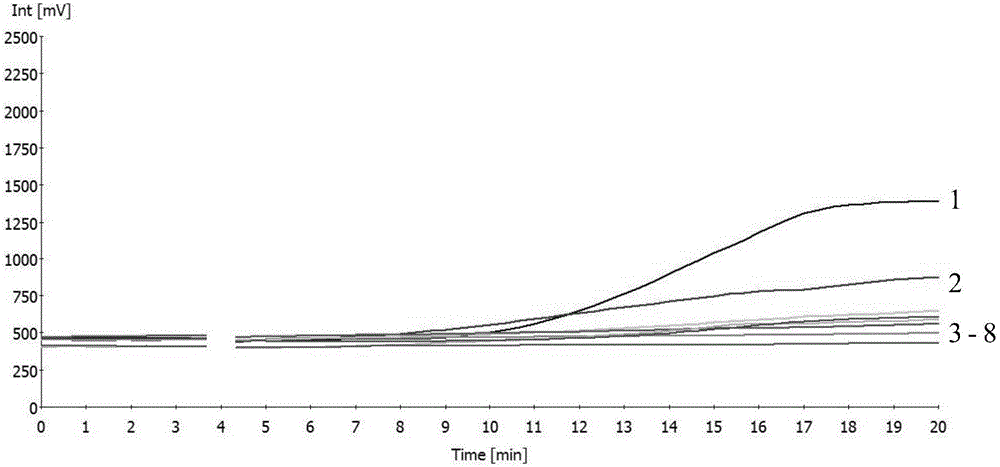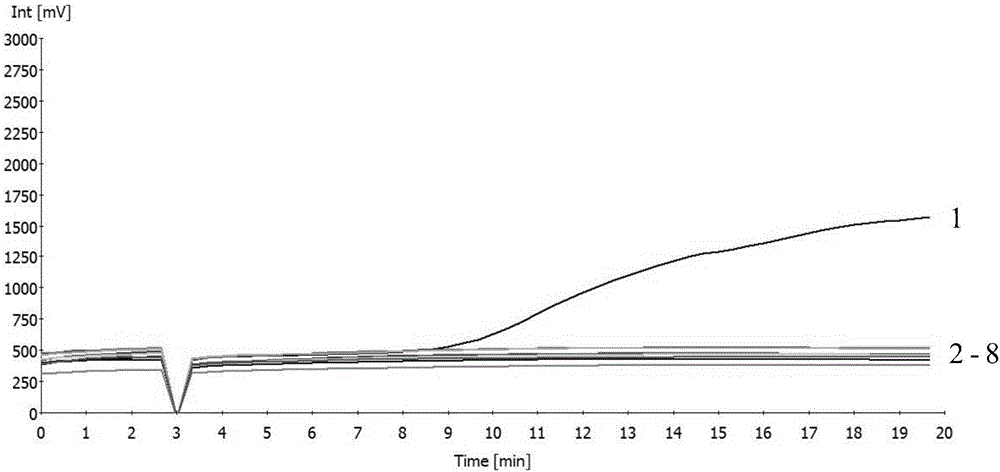Method for identifying transgenic maize Bt176 strain specificity by RPA (recombinase polymerase amplification) technology
A transgenic corn, specific technology, applied in the direction of recombinant DNA technology, DNA / RNA fragments, microbial determination / inspection, etc., to achieve high sensitivity results
- Summary
- Abstract
- Description
- Claims
- Application Information
AI Technical Summary
Problems solved by technology
Method used
Image
Examples
Embodiment 1
[0018] Firstly, primers and probes were designed according to the specific regions of transgenic maize BT176 transformants. The length of the primer is about 35nt. RPA experiments need to design multiple pairs of primers from both ends of the target sequence for optimization and screening. The increase, decrease or substitution of individual bases will have an important impact on the experimental results. A large number of primers were designed in this experiment, and a pair of primers with high sensitivity and specificity were screened out for RPA fluorescence detection. The sequences of primers and probes are listed in Table 1.
[0019] Table 1
[0020]
[0021] Note: FAM: luminescent group; dSpacer: abasic site; BHQ1: quenching group; block: closed group, carbonation used this time.
[0022] 1. Experimental materials
[0023] 1.1 Plant material
[0024] Genetically modified corn BT176 standard substance, genetically modified corn MON810 standard substance, geneticall...
PUM
 Login to View More
Login to View More Abstract
Description
Claims
Application Information
 Login to View More
Login to View More - R&D
- Intellectual Property
- Life Sciences
- Materials
- Tech Scout
- Unparalleled Data Quality
- Higher Quality Content
- 60% Fewer Hallucinations
Browse by: Latest US Patents, China's latest patents, Technical Efficacy Thesaurus, Application Domain, Technology Topic, Popular Technical Reports.
© 2025 PatSnap. All rights reserved.Legal|Privacy policy|Modern Slavery Act Transparency Statement|Sitemap|About US| Contact US: help@patsnap.com



